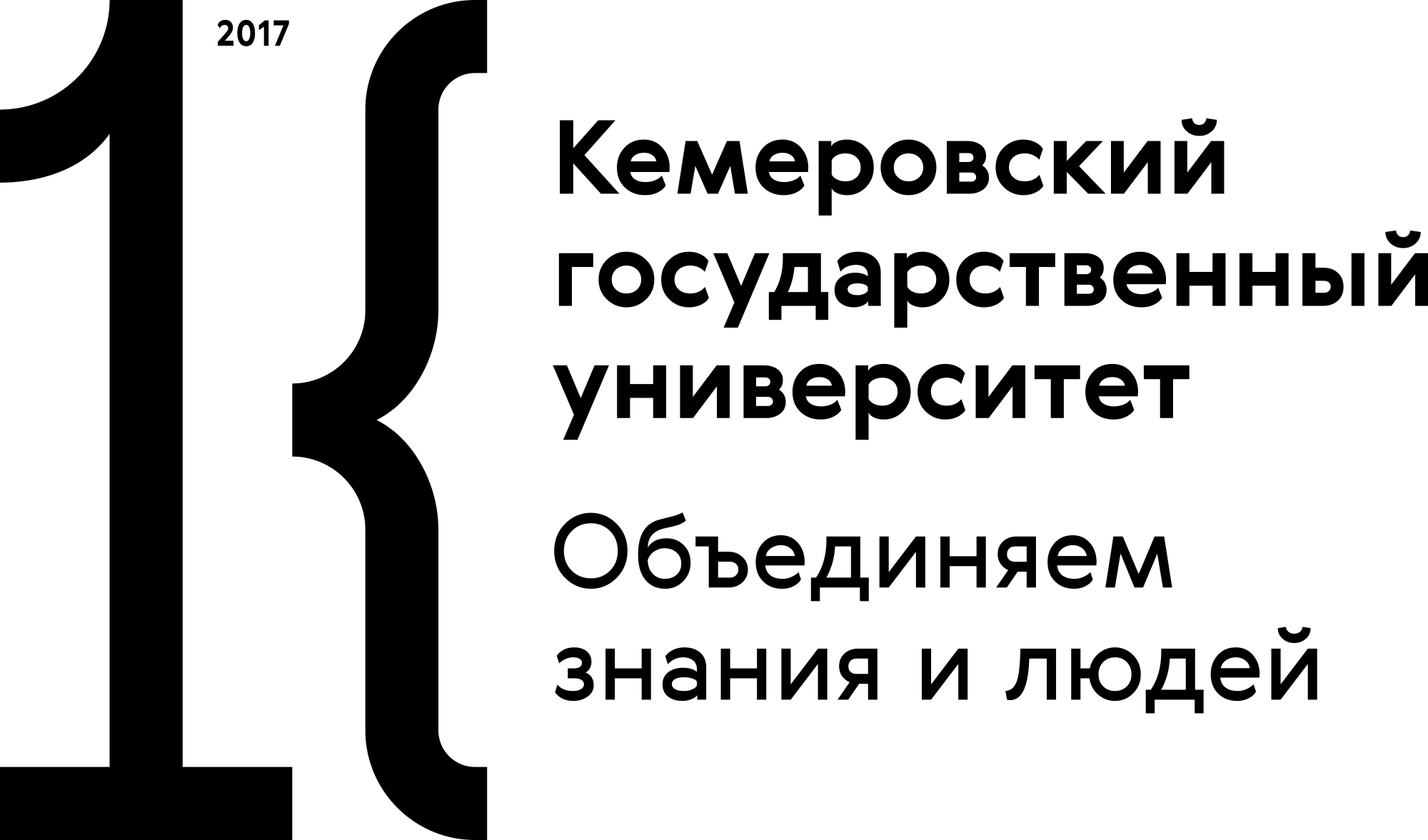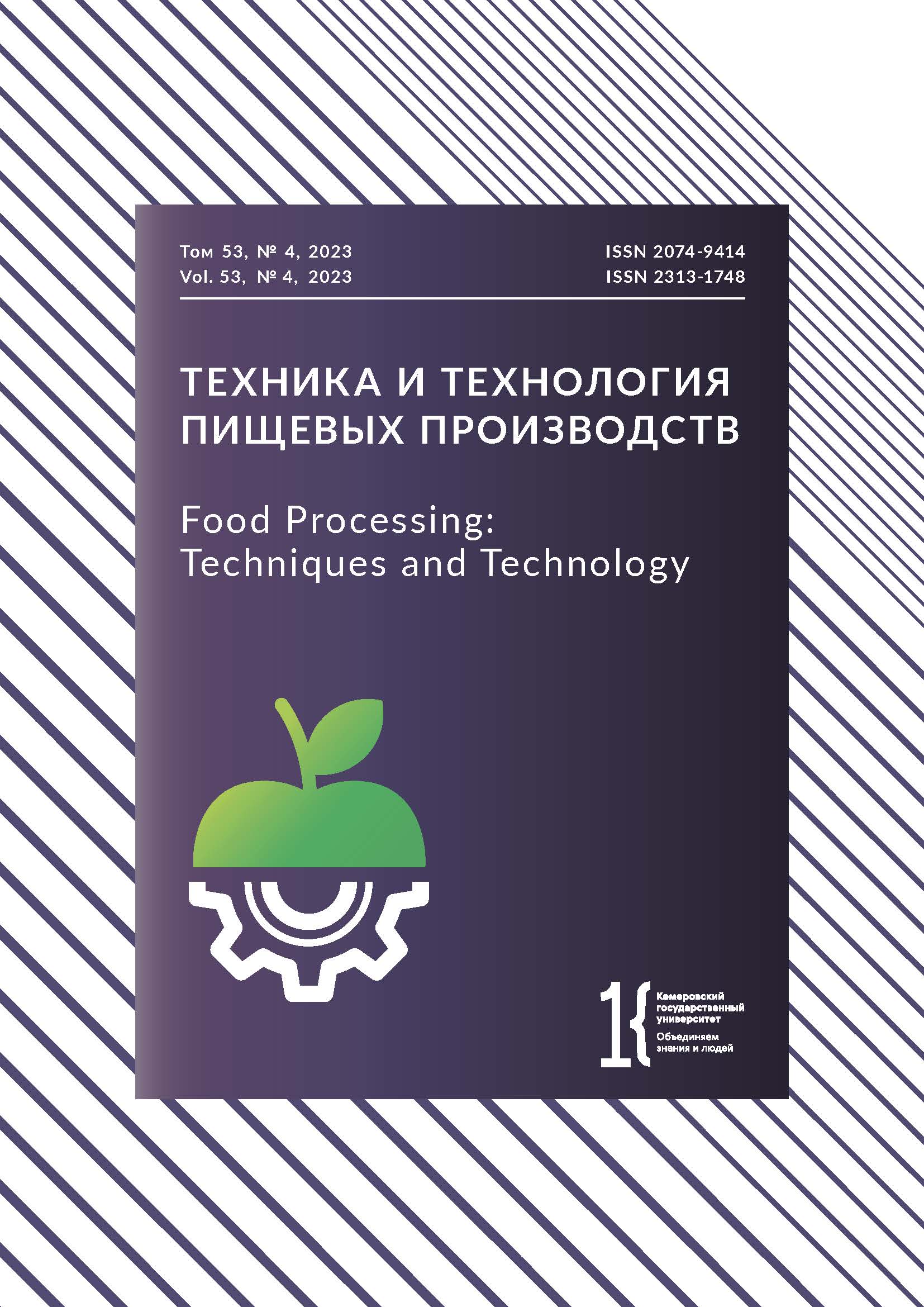Volgograd, Russian Federation
Volgograd, Volgograd, Russian Federation
Volgograd, Russian Federation
A profitable meat-processing business relies on the rational use of its resources, which, in its turn, depends on the constant improvement of product formulations and development of new ones. These operations involve advanced analytical methods and complex approaches. The article introduces a review of modern technical solutions, methods, and approaches to modeling new complex meat products with preset quality indicators. The review (1990–2022) involved research articles published in high-rated peer-reviewed research journals, educational literature, digital theses published by Russian Dissertation Councils, and patents registered by the Institute of Industrial Property. The synchronic and diachronic analysis of basic principles of food product design and parametric modeling revealed no universal methodology for meat products development, both in terms of goals and applicability to different meat products types. Forecasting of finished meat products quality indicators requires relevant and accurate information, which is highly variable and fast-changing. Unfortunately, advanced information technologies are slow to adapt to the urgent tasks of the food industry. As a result, the current methods for developing new complex meat product formulations are useless when meat producers have no access to relevant and self-updating databases on raw m aterials properties.
Food combinatorics, mathematical modeling, digital twin, structural and parametric optimization, cyclic approach, mathematical programming, biological value
1. Grahl S, Palanisamy M, Strack M, Meier-Dinkel L, Toepfl S, Morlein D. Towards more sustainable meat alternatives: How technical parameters affect the sensory properties of extrusion products derived from soy and algae. Journal of Cleaner Production. 2018;198:962-971. https://doi.org/10.1016/j.jclepro.2018.07.041
2. Danilov YuD, Gorlov IF, Slozhenkina MI, Zlobina EYu, Slozhenkina AA, Mosolova DA. Studying the opportunity of extruded nute and wheat use in sausage products technology of increased biological values. Proceedings of Lower Volga Agro-University Complex: Science and Higher Education. 2018;50(2):257-270. (In Russ.). https://elibrary.ru/VOQSFJ
3. Rodionova NS, Shchetilina IP, Korotkova KG, Cholin VA, Cherkasova NS, Torosyan AO. Prospects for the use of pulses in innovative technologies for functional food products. Proceedings of the Voronezh State University of Engineering Technologies. 2020;82(3):153-163. (In Russ.). https://doi.org/10.20914/2310-1202-2020-3-153-163
4. Kandylis P, Kokkinomagoulos E. Food applications and potential health benefits of pomegranate and its derivatives. Foods. 2020;9(2). https://doi.org/10.3390/foods9020122
5. Monteiro GC, Minatel IO, Junior AP, Gomez-Gomez HA, de Camargo JPC, Diamante MS, et al. Bioactive compounds and antioxidant capacity of grape pomace flours. LWT. 2021;135. https://doi.org/10.1016/j.lwt.2020.110053
6. Ubbink J. Materials science approaches towards food design. In: Bhandari B, Roos YH, editors. Food materials science and engineering. Blackwell Publishing Ltd; 2012. pp. 177-203. https://doi.org/10.1002/9781118373903.ch7
7. Kaur R, Sharma M. Cereal polysaccharides as sources of functional ingredient for reformulation of meat products: A review. Journal of Functional Foods. 2019;62. https://doi.org/10.1016/j.jff.2019.103527
8. Han M, Bertram HC. Designing healthier comminuted meat products: Effect of dietary fiders on water distribution and texture of a fat-reduced meat model system. Meat Science. 2017;133:159-165. https://doi.org/10.1016/j.meatsci.2017.07.001
9. Zolotin AYu, Simonenko SV, Antipova TA, Felik SV, Simonenko ES, Sedova AE. Food development methodology. Food Industry. 2019;11:50-55. (In Russ.). https://doi.org/10.24411/0235-2486-2019-10177
10. Statsenko ES, Kodirova GA. Development of recipes for enriched food concentrates for the second course using multivariate analysis. Achievements of Science and Technology in Agro-Industrial Complex. 2021;35(4):72-76. (In Russ.). https://doi.org/10.24411/0235-2451-2021-10412
11. Aggett PJ. Dose-response relationships in multifunctional food design: Assembling the evidence. International Journal of Food Sciences and Nutrition. 2012;63(1):37-42. https://doi.org/10.3109/09637486.2011.636344
12. Nikitina MA. Integration of digital technologies in the decision-making process in the development of food products with preset composition and properties. Dr. eng. sci. diss. Moscow: Moscow State University of Food Production; 2020. 265 p. (In Russ.). https://elibrary.ru/ZLLFOA
13. Lipatov NN. Theory and practice of designing food systems based on the phenomenological approach. Izvestiya Vuzov. Food Technology. 1990;6:5-10. (In Russ.). https://elibrary.ru/PZMWCD
14. Nikitina MA, Sus EB, Zavgorodneva DV. Information technologies in development of multicomponent meat products taking into account biological value. Vsyo o Myase. 2014;(4):48-51. (In Russ.). https://elibrary.ru/SMEQUT
15. Lisitsyn AB, Nikitina MA, Zakharov AN, Sus EB, Nasonova VV, Lebedeva LI. Prediction of meat product quality by the mathematical programming methods. Theory and Practice of Meat Processing. 2016;1(1):75-90. (In Russ.). https://doi.org/10.21323/2414-438X-2016-1-1-75-90
16. Lisin PA, Moliboga EA, Voronova TD, Savelyeva YuS, Kister IV. The compositional design of multicomponent foodstuff. Agrarian Bulletin of the Urals. 2013;118(12):42-46. (In Russ.). https://elibrary.ru/RPRXLL
17. Fiszman S, Varela P. The satiating mechanisms of major food constituents - An aid to rational food design. Trends in Food Science and Technology. 2013;32(1):43-50. https://doi.org/10.1016/j.tifs.2013.05.006
18. Derevitskaya OK, Dydykin AS, Aslanova MA, Sergeev VN, Zokhrabyan PR. Development of a meat-based product for enteral nutrition. Problems of Nutrition. 2018;87(3):51-57. (In Russ.). https://doi.org/10.24411/0042-8833-2018-10031
19. Farouk MM, Yoo MJY, Hamid NSA, Staincliffe M, Davies B, Knowles SO. Novel meat-enriched foods for older consumers. Food Research International. 2018;104:134-142. https://doi.org/10.1016/j.foodres.2017.10.033
20. Nikitina MA, Sus EB. Information system of design of foodstuff. Vsyo o Myase. 2015;(1):36-39. (In Russ.). https://elibrary.ru/TJZFAL
21. Neburchilova NF, Petrunina IV. Principles of determination of value in use for meat and meat products based on quality indicators - the coefficients of consumer properties. Theory and Practice of Meat Processing. 2016;1(3):81-95. (In Russ.). https://doi.org/10.21323/2414-438X-2016-1-3-81-95
22. Kalinina IV, Potoroko IYu. Methodological approaches to creation of enriched food products with proven efficiency. Bulletin of the South Ural State University. Series: Food and Biotechnology. 2019;7(1):5-11. (In Russ.). https://doi.org/10.14529/food190101
23. Nugmanov AKh-Kh. Theory and practice of designing food systems based on the phenomenological approach. Dr. eng. sci. diss. Krasnodar: Kuban State Technological University; 2017. 523 p. (In Russ.). https://elibrary.ru/RCSVNP
24. Semipyatnyy VK. Principles of meta-analytical decomposition in the formation of digital identification profiles of food systems. Dr. eng. sci. diss. Moscow: V.M. Gorbatov Federal Research Center for Food Systems of RAS; 2021. 345 p. (In Russ.).
25. Donskikh NV, Muratova EI, Tolstykh SG, Leonov DV. Development of an automated information system for the calculation and optimization of food formulations. Izvestiya Vuzov. Food Technology. 2011;320-321(2-3):122-123. (In Russ.). https://elibrary.ru/NVWAIZ
26. Cazarin CBB, Bicas JL, Marostica Junior MR. 1st international congress bioactive compounds 2018 - Food design and health nutrition. Food Research International. 2020;134. https://doi.org/10.1016/j.foodres.2020.109224
27. Oliviero T, Fogliano V. Food design strategies to increase vegetable intake: The case of vegetable enriched pasta. Trends in Food Science and Technology. 2016;51:58-64. https://doi.org/10.1016/j.tifs.2016.03.008
28. Konishi Y. Food design system for sea foods based on functionality and texture. Nippon Suisan Gakkaishi. 2008;74(2):257-258. https://doi.org/10.2331/suisan.74.257
29. Nikiforova AP, Damdinova TTs. Quality assessment of meat products by digital image processing. Production Quality Control. 2019;(3):32-38. (In Russ.). https://elibrary.ru/YYFBOX
30. Nikiforova AP, Damdinova TTs, Stolyarova AS. The study of organoleptic properties of fish products with the use of digital images processing. The Bulletin of ESSTUM. 2018;71(4):135-142. (In Russ.). https://elibrary.ru/AVWACY
31. Damdinova TTs, Nikiforova AP, Prudova LYu, Bubeev IT. The use of digital image processing methods to determine the moisture-binding capacity of meat and fish products. Software Systems and Computational Methods. 2019;(3):20-29. (In Russ.). https://doi.org/10.7256/2454-0714.2019.3.30646
32. Karpov VI, Portnov NM. Optimization of the recipe composition of a food product. System analysis in design and management: Proceedings of the XXIV International Research and Academic Conference; 2020; St. Petersburg. St. Petersburg: Politekh-Press; 2020. p. 169-182. (In Russ.). https://doi.org/10.18720/SPBPU/2/id20-164
33. Razumovskaja RG, Tsibizova ME, Kilmaev AA. Methodological principles of project of the functional food stuffs. Food Industry. 2011;(8):12-14. (In Russ.). https://elibrary.ru/OHFXOV
34. Dydykin AS. Developing scientific and practical foundations for new functional and specialized meat products based on the assessment of technological impact on their quality and safety. Dr. eng. sci. diss. Moscow: V.M. Gorbatov Federal Research Center for Food Systems of RAS; 2022. 379 p. (In Russ.).
35. Shchedrina TV, Sadovoy VV, Trubina IA. Optimization of the prescription of foods for preventive nutrition. Modern Science and Innovations. 2018;24(4):149-157. (In Russ.). https://doi.org/10.33236/2307-910X-2018-4-24-149-157
36. Lisitsyn AB, Chernukha IM, Lunina OI, Fedulova LV. Legislative foundations and scientific principles of developing meat-based functional foods. Bulletin of Altai State Agricultural University. 2016;146(12):151-158. (In Russ.). https://elibrary.ru/XDRUVP
37. Ursachi CȘ, Perța-Crișan S, Munteanu F-D. Strategies to improve meat products’ quality. Foods. 2020;9(12). https://doi.org/10.3390/foods9121883
38. Lebedeva EYu, Kasyanov GI. Innovative technologies for processing combined fish and vegetable raw materials. Vestnik of Astrakhan State Technical University. 2022;74(2):24-30. (In Russ.). https://doi.org/10.24143/1812-9498-2022-2-24-30
39. Krasulya ON, Gurin AV, Skorikov MA, Kazakova EV. A cooked smoked sausage technology with the use of sonochemical effects to intensify raw material curing. Meat Industry. 2021;(6):37-41. (In Russ.). https://doi.org/10.37861/2618-8252-2021-06-37-41
40. Minaev MYu, Mahova AA, Pchelkina VA. Production of recombinant metalloprotease of use for meat industry. Food Industry. 2019;(1):64-68. https://elibrary.ru/YXHEXR
41. Ryazantseva AO. Sausage breads and chopped semi-finished meat products with improved consumer proeprties based on protein-carbohydrate plant compositions. Cand. eng. sci. diss. Moscow: K.G. Razumovsky Moscow State University of Technologies and Management; 2019. 215 p. (In Russ.). https://elibrary.ru/WMNLEB
42. Ayyash M, Liu S-Q, Al Mheiri A, Aldhaheri M, Raeisi B, Al-Nabulsi A, et al. In vitro investigation of health-promoting benefits of fermented camel sausage by novel probiotic Lactobacillus plantarum: A comparative study with beef sausages. LWT. 2019;99:346-354. https://doi.org/10.1016/j.lwt.2018.09.084
43. Tikhonov SL, Tikhonova NV, Moskalenko NYu, Kudryashova OA, Kudryashov LS. Development of a device for increasing the storage duration of food products by processing with low-temperature gas plasma. Polzunovskiy Vestnik. 2021;(1):74-83. (In Russ.). https://doi.org/10.25712/ASTU.2072-8921.2021.01.010
44. Karpov VI, Krasulia ON, Tokarev AV. Artificial intelligence in a technological production system of the set quality. Proceedings of the Voronezh State University of Engineering Technologies. 2017;79(1):106-113. (In Russ.). https://doi.org/10.20914/2310-1202-2017-1-106-113
45. Sijtsema SJ, Fogliano V, Hageman M. Tool to support citizen participation and multidisciplinarity in food innovation: Circular food design. Frontiers in Sustainable Food Systems. 2020;4. https://doi.org/10.3389/fsufs.2020.582193
46. Saguy S, Taoukis PS. From open innovation to enginomics: Paradigm shifts. Trends in Food Science and Technology. 2017;60:64-70. https://doi.org/10.1016/j.tifs.2016.08.008
47. Di Renzo L, Gualtieri P, Romano L, Marrone G, Noce A, Pujia A, et al. Role of personalized nutrition in chronic-degenerative diseases. Nutrients. 2019;11(8). https://doi.org/10.3390/nu11081707
48. Prosekov AYu. The methodology of food design. Part 1. The individual aspect. Theory and Practice of Meat Processing. 2020;5(4):13-17. https://doi.org/10.21323/2414-438X-2020-5-4-13-17
49. Prosekov AYu, Vesnina AD, Kozlova OV. The methodology of food design. Part 2. Digital nutritiology in personal food. Theory and Practice of Meat Processing. 2021;6(4):328-334. https://doi.org/10.21323/2414-438X-2021-6-4-328-334











